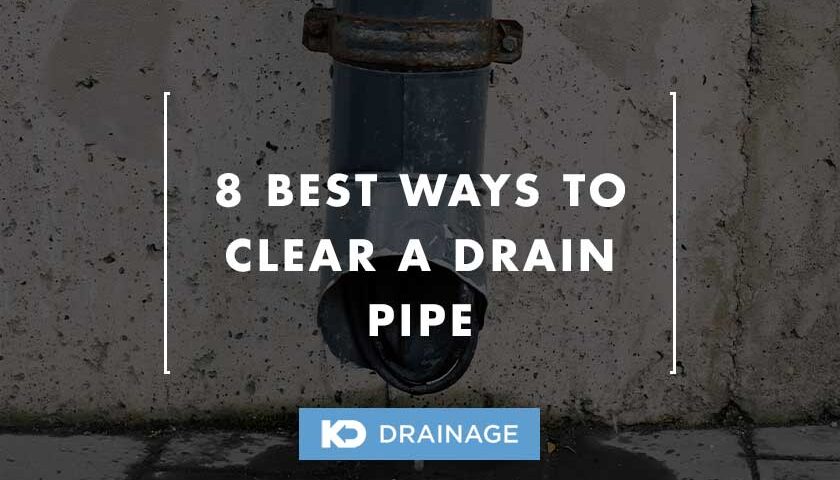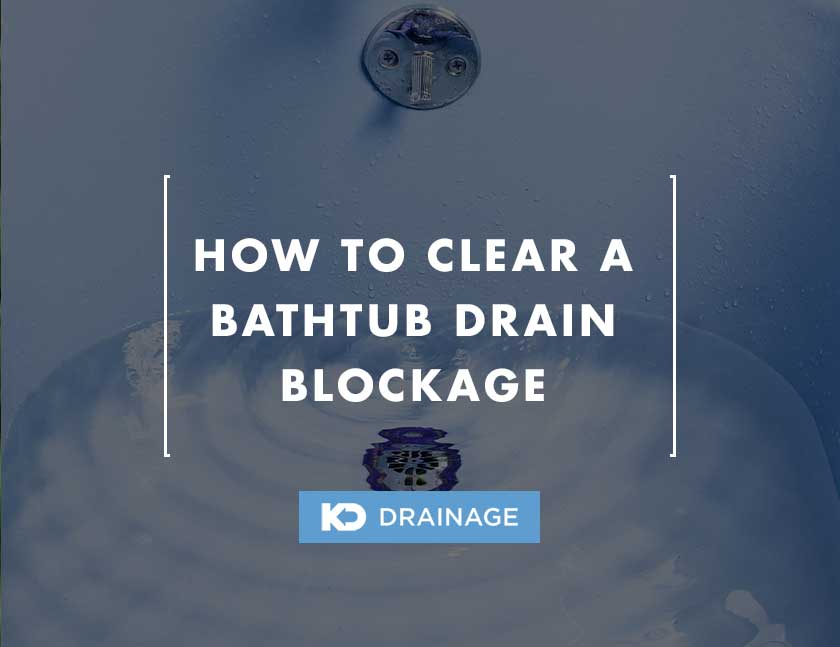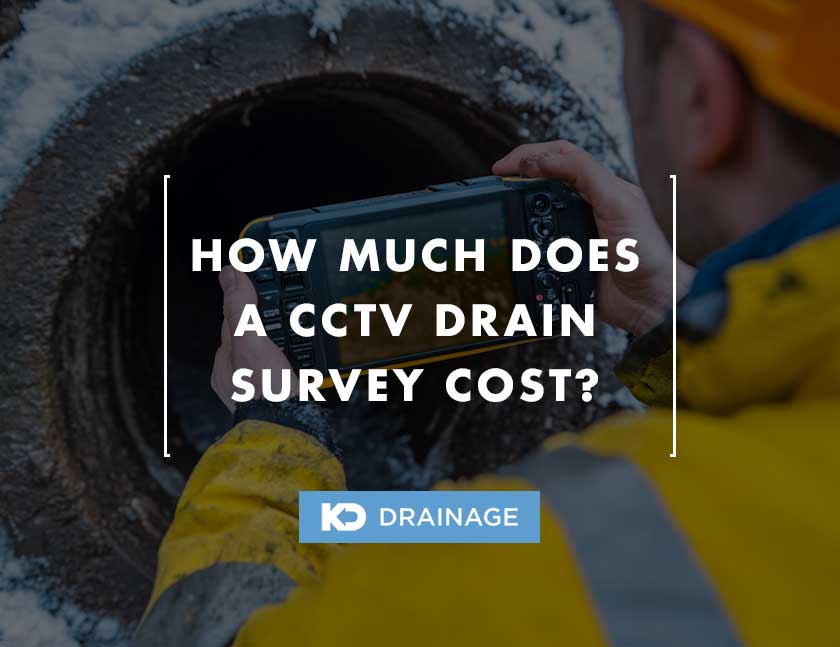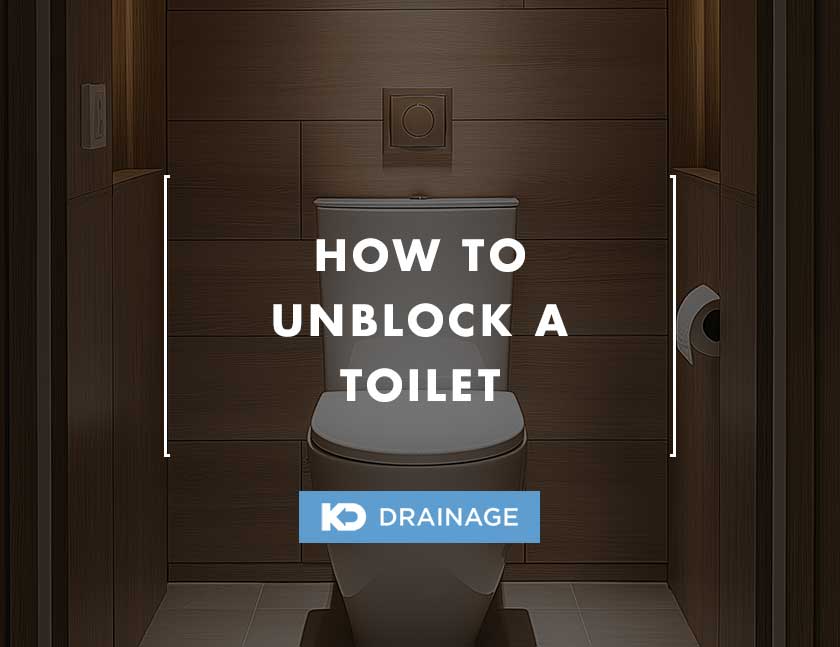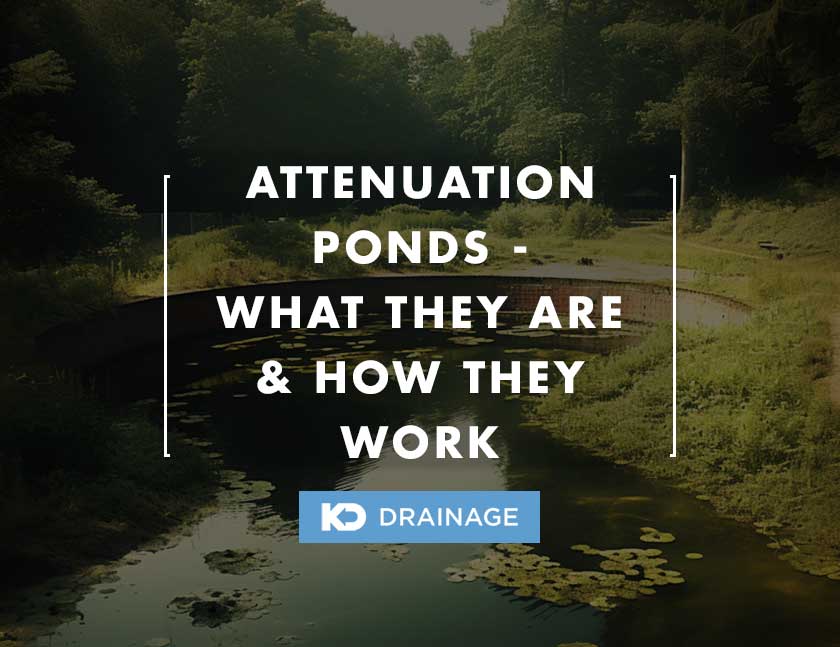
Attenuation Ponds – What They Are & How They Work
1 March 2024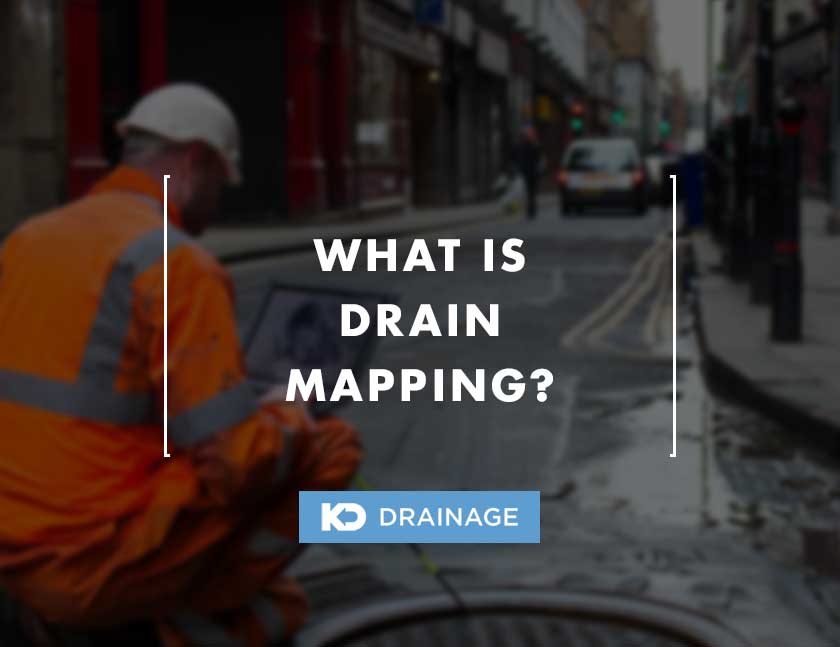
What is Drain Mapping?
1 May 20248 Best Ways to Clear a Drain Pipe
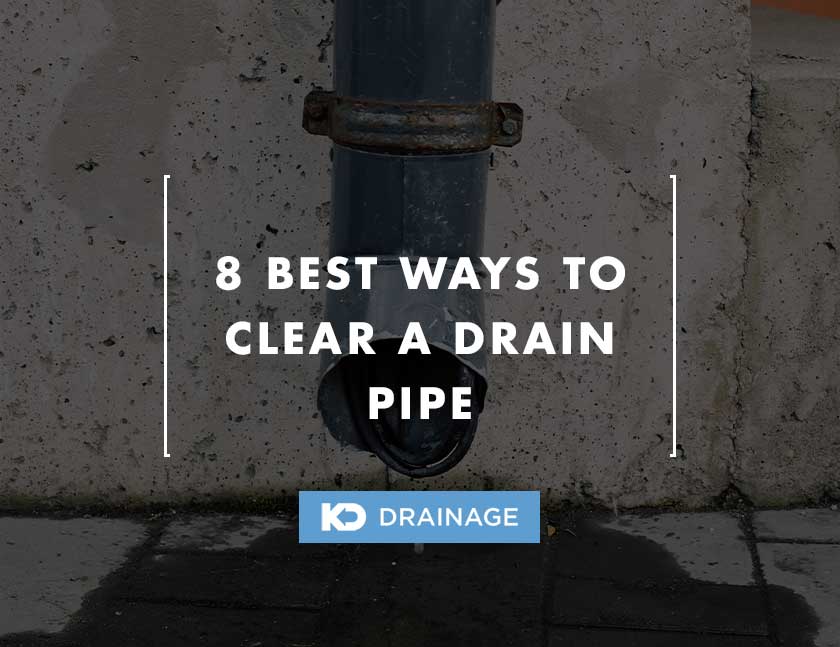
Dealing with a blocked drain pipe can be a major inconvenience, and not knowing how to clear a drain pipe can make it worse.
Not having a clear, free-flowing drain pipe can cause numerous issues, as that water still has to go somewhere.
In this article we explain the 8 best ways to clear a drain pie efficiently and prevent future clogs.
These simple yet effective solutions to keep your drainage system flowing smoothly.
Table of Contents
Causes of a Blocked Drain Pipe
Blocked drain pipes are a common household woe, often caused by an amalgamation of various elements that find their way into our outdoor plumbing.
Understanding these causes is crucial for preventing leaking pipes and addressing blockages effectively.
Let’s delve into the diverse culprits behind blocked drain pipes:
Leaves
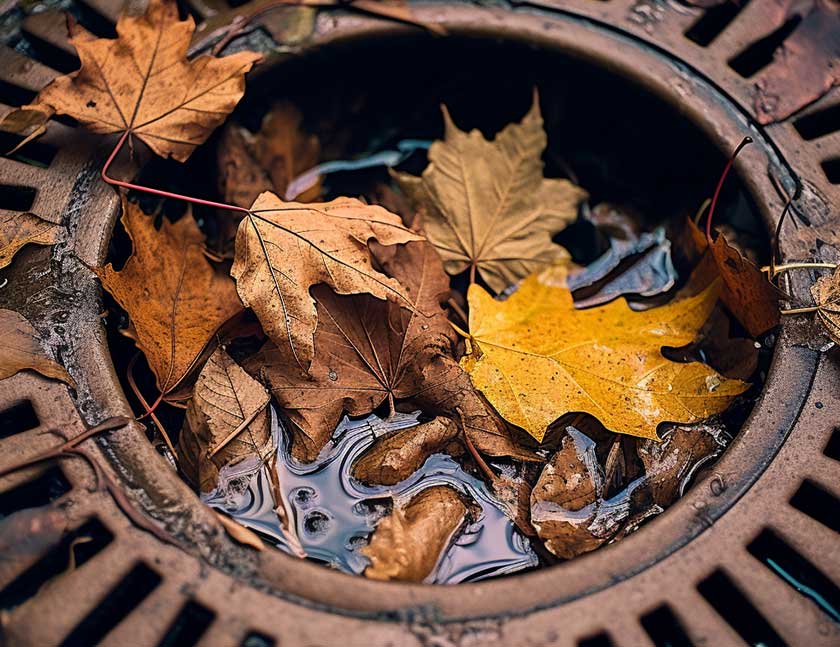
The picturesque beauty of autumn leaves takes a less appealing turn when they accumulate in gutters and drain pipes.
Falling leaves can create a formidable barrier, impeding the smooth flow of water.
As they accumulate, they not only block the drain but also facilitate the accumulation of other debris, compounding the problem.
Moss
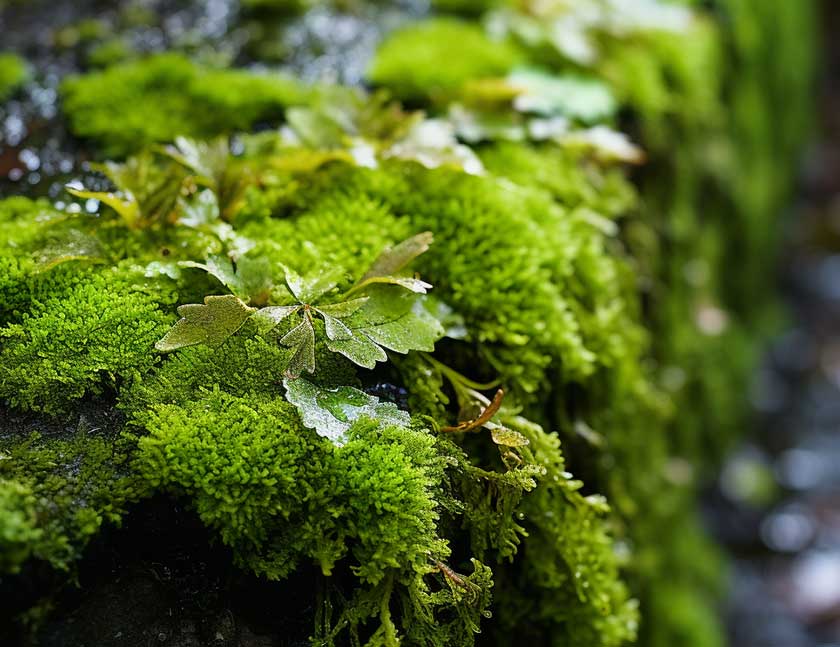
Nature, in its lush greenery, sometimes poses a hidden threat within drain pipes.
Moss growth can occur over time, particularly in damp and shaded areas.
This seemingly harmless green carpet can transform into a formidable barrier within the pipe, restricting the flow of water and providing an environment for other debris to build up.
Sticks & Twigs

In the outdoors, sticks and twigs may seem harmless, but when they find their way into drain pipes, they become significant contributors to blockages.
Storms and high winds can easily carry these natural elements into gutters, creating a barrier that hinders rainwater.
Animals
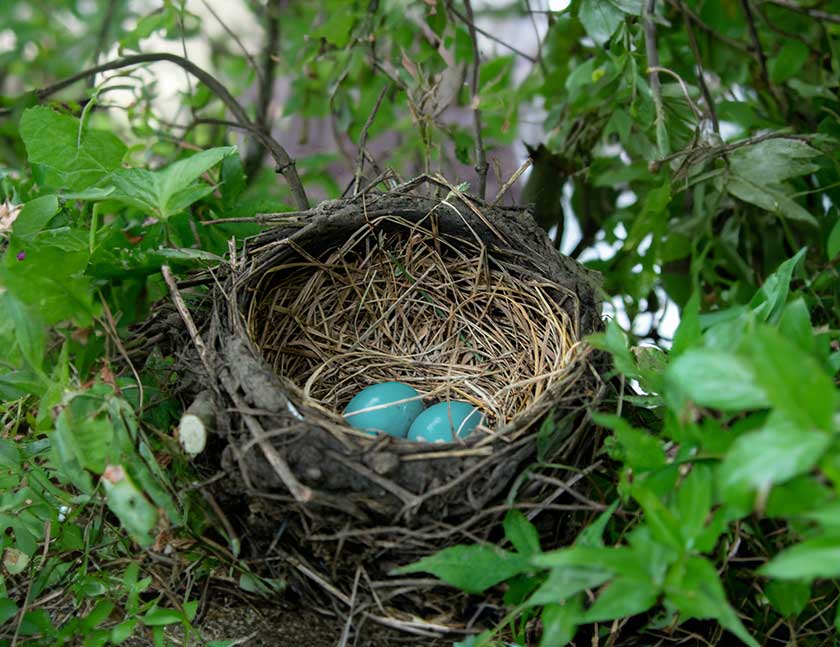
Curious critters can unwittingly contribute to drain blockages.
Small animals, seeking refuge or nesting spots, may inadvertently deposit debris into drain pipes.
This unexpected addition can lead to clogs and water backup.
Wasp Nests
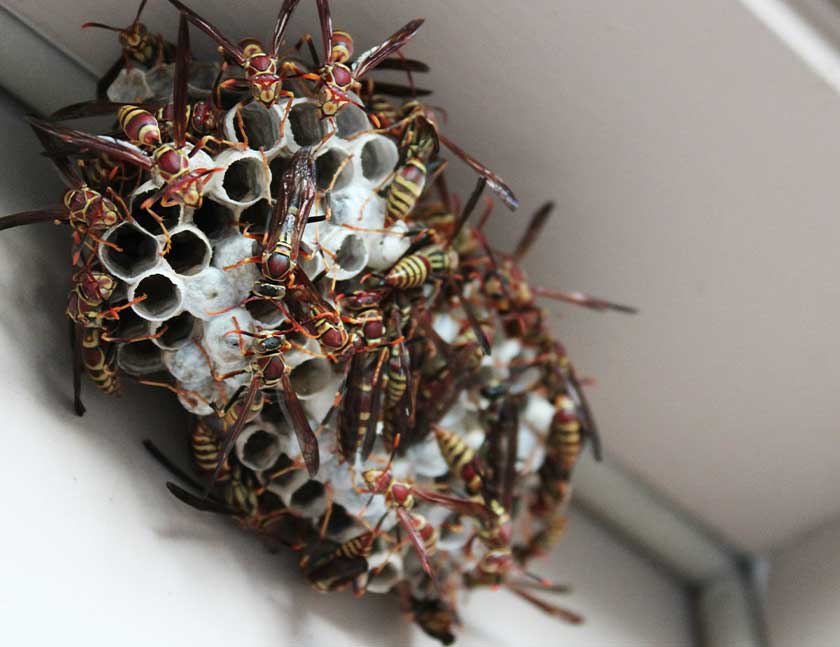
The architectural marvels of wasp nests can create more than just a buzzing concern; they can be a serious threat to drain pipes.
Built within the confines of the plumbing system, wasp nests can obstruct the flow of water and pose a challenge for removal due to the danger they pose.
Broken Tiles
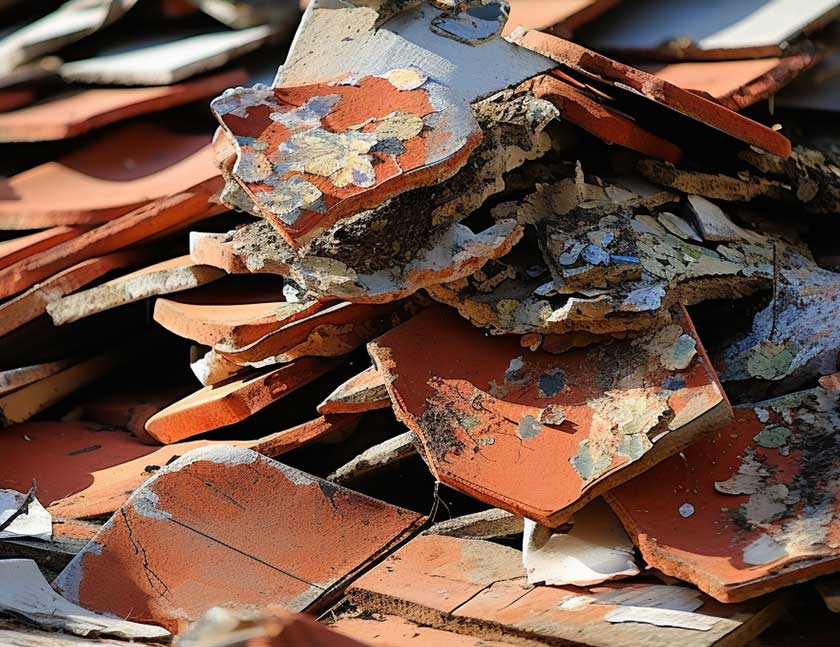
Cracked or broken tiles on rooftops may seem nothing more than a nuisance, but they can be potential debris in drain pipes.
The irregular surfaces created by damaged tiles can trap leaves, sticks, and other materials, contributing to the formation of blockages.
Cracked Cement
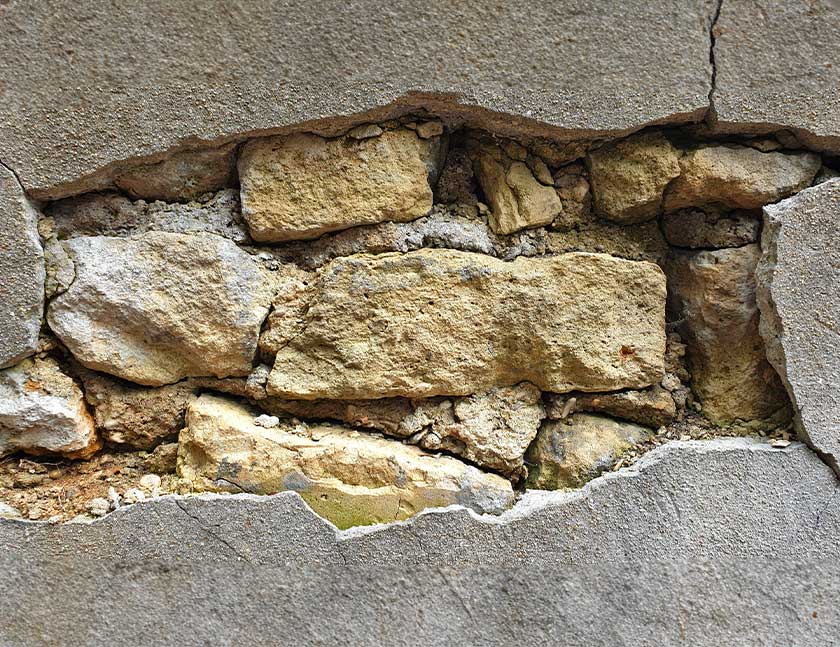
Broken construction materials, particularly cement, poses a risk to drain pipes.
When bits of cement fall into a drain pipe, it can cause serious blockages, similar to broken roof tiles.
Balls

Children’s toys and balls, unlikely as it seems, occasionally find their way into drain pipes.
Though unintentional, these objects can create significant blockages, necessitating prompt removal to restore the smooth flow of water.
Signs of a Blocked Drain Pipe
Recognising the signs of a blocked drain pipe is crucial to prevent potential damage and restore the efficient functioning of your plumbing system.
Here are key indicators to be aware of:
Water Flowing from the Top of the Drain Pipe
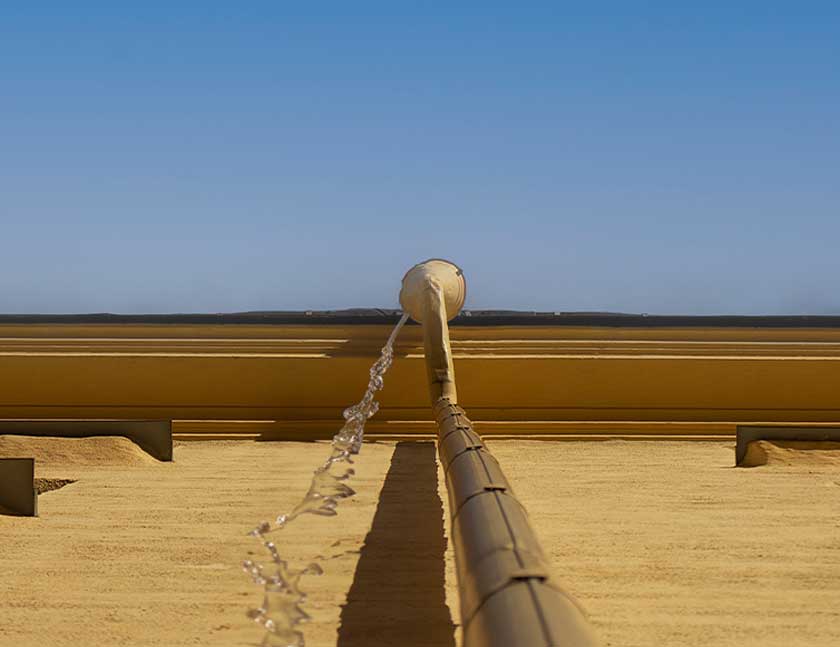
One clear sign of a blockage is water visibly escaping from the top of the drain pipe.
This indicates that the water, unable to pass through the clog, is finding alternative paths, often emerging from the upper reaches of the pipe.
Identifying this issue is an immediate signal that intervention is needed.
Water Splashes on the Ground
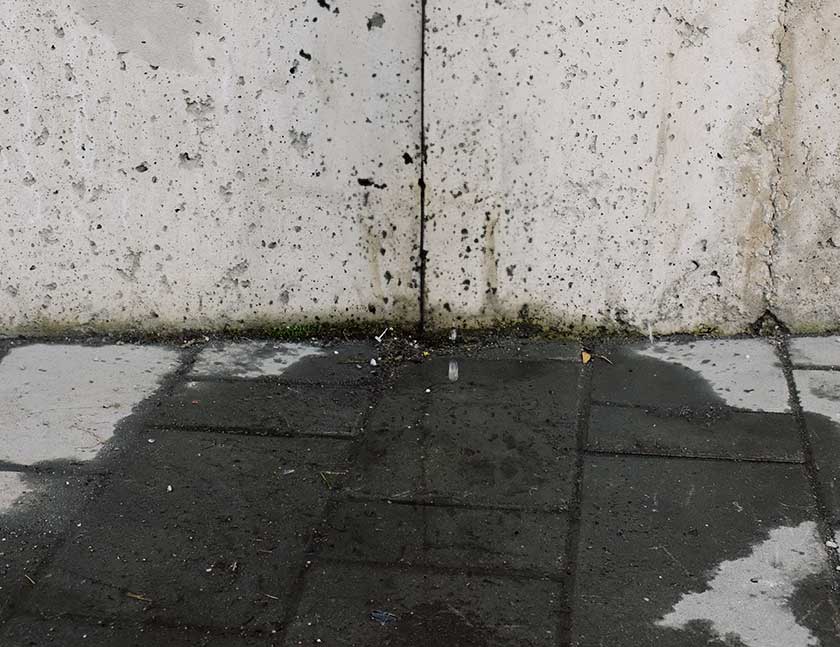
If you notice water splashes on the ground, it can be a telltale sign of a blockage.
The obstruction prevents water from flowing smoothly through the pipe, causing it to build up and overflow from the top of the pipe.
This not only points to a clog but also presents the risk of water damage to the surrounding area.
Mouldy or Discoloured Brickwork
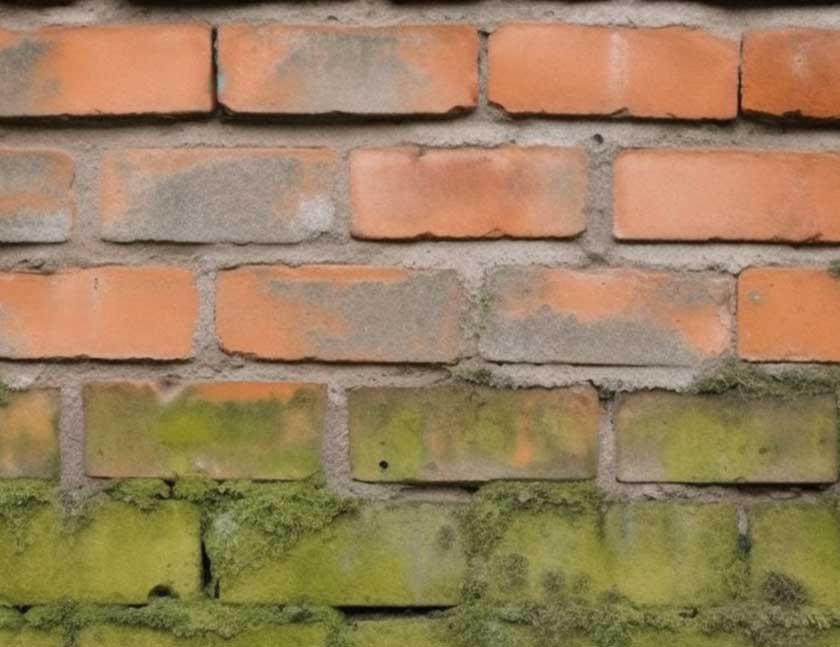
External signs can manifest on the brickwork near the drain pipe.
The accumulation of water due to a blockage can lead to mould growth or discoloration on the adjacent brick surfaces.
Observing changes in the appearance of the brickwork serves as an early warning sign, prompting investigation and timely action.
Damp Internal Walls
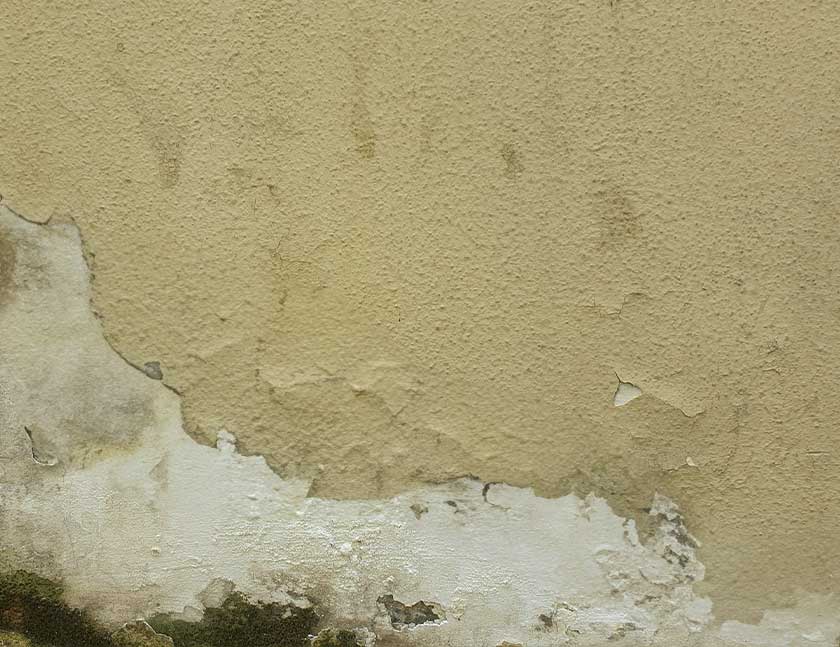
Internally, blocked drain pipes can manifest as dampness on interior walls.
The inability of water to freely flow through the plumbing system may result in moisture seeping through walls.
Damp patches or discoloration on internal surfaces are indicative of a drainage issue, necessitating thorough inspection and resolution.
8 Best Ways to Clear a Drain Pipe
Dealing with a blocked drain pipe can be a hassle, but a variety of effective methods exist to tackle the issue and restore normal water flow.
Here, we explore the intricacies of each method, detailing how they work and pros and cons.
Manual Clearing
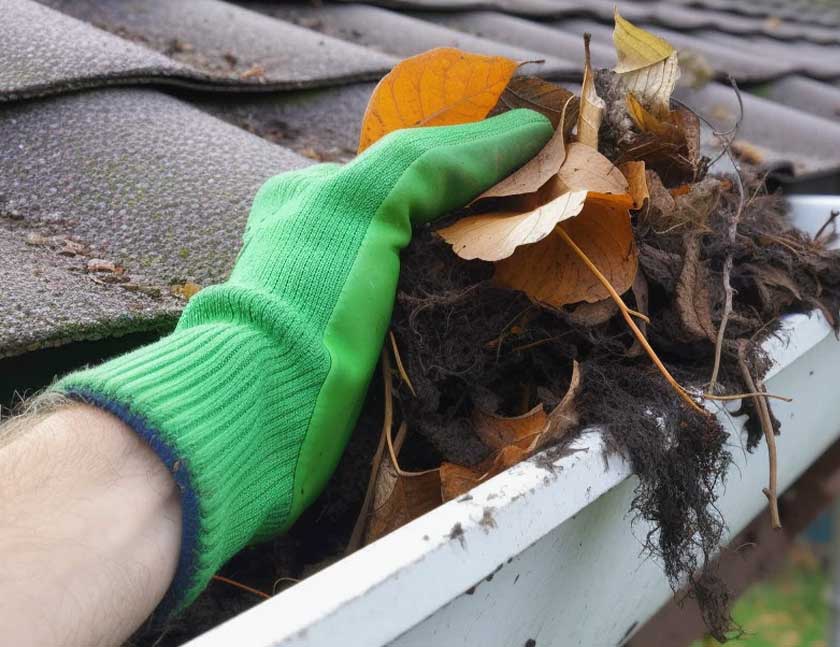
Manual clearing involves physically removing debris such as leaves and twigs to clear the drain pipe.
This method is the most common way to fix your outdoor plumbing.
Advantages
- Manual clearing requires minimal equipment, making it a budget-friendly option.
- Can be performed instantly without waiting for professional assistance.
- Homeowners can tackle minor blockages independently.
Disadvantages
- Manual clearing is most effective for minor clogs and may struggle with more stubborn blockages, or blockages further down the drain pipe.
- It can be physically demanding, especially for deep or hard-to-reach blockages.
- Improperly done, you may scratch or damage the interior of the pipes.
Boiling Water
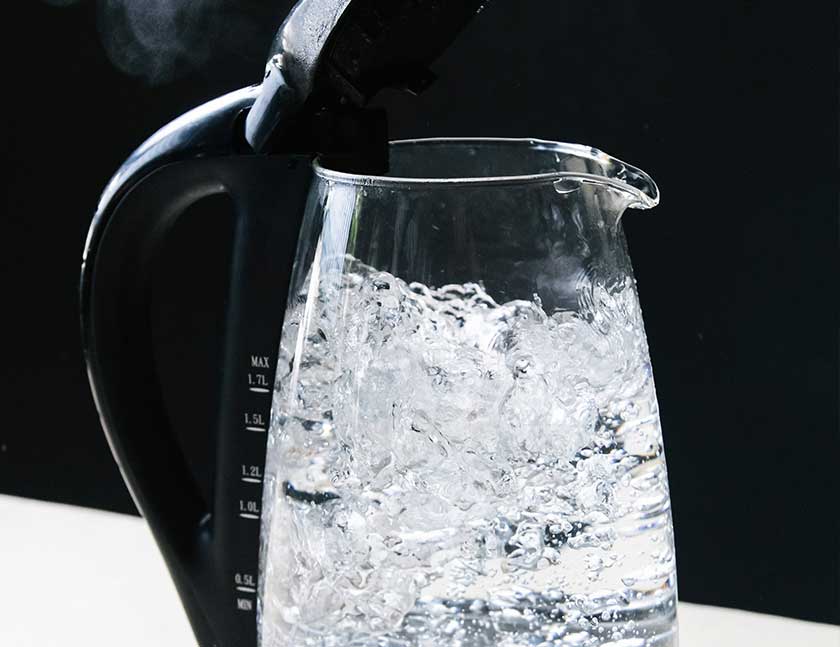
Boiling water is a simple and cost-effective method.
Pouring hot water down the drain pipe can help break down certain small organic blockages, allowing them to be washed away.
Advantages
- Boiling water is readily available and requires no additional products.
- Environmentally friendly: Boiling water is a natural and eco-friendly method.
Disadvantages
- Boiling water may not be sufficient for severe or stubborn blockages.
- Not recommended for pipes made of PVC, as extremely hot water can damage them.
- Pouring boiling water requires caution to avoid burns or scalds.
Baking Soda
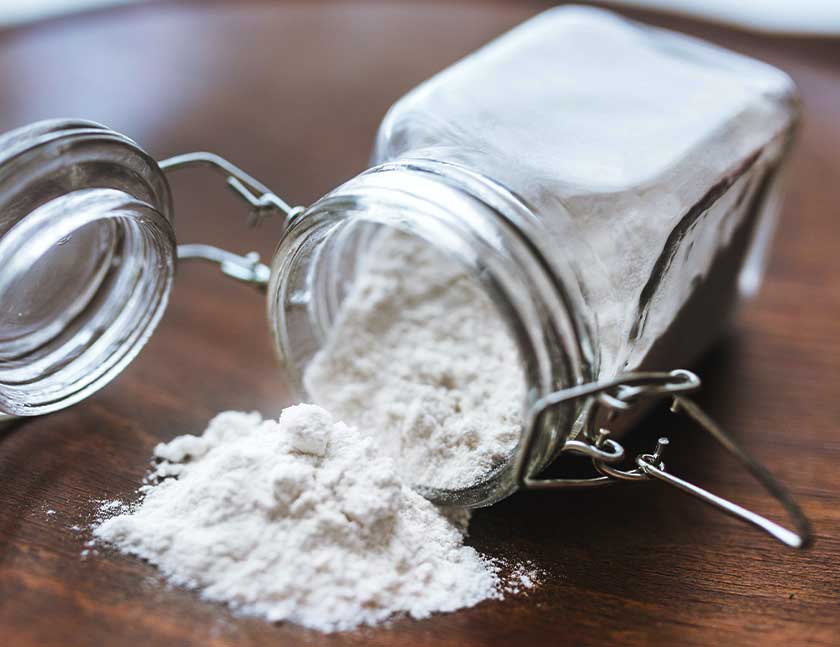
A mixture of baking soda and vinegar creates a foaming reaction.
This foaming action helps dislodge and break down debris, assisting in the clearing of the drain.
Baking soda acts as a natural abrasive, aiding in the cleaning process.
Advantages
- Baking soda provides a natural and chemical-free option for clearing blockages.
- Acts as a deodorizer, eliminating unpleasant odours in the process.
- Does not corrode or harm pipes, making it a gentle option for regular maintenance.
Disadvantages
- May not be sufficient for severe or stubborn blockages
- More suitable for preventing blockages than for clearing existing ones.
- Time-consuming: Takes time to react and may not provide immediate relief.
Drain Snake
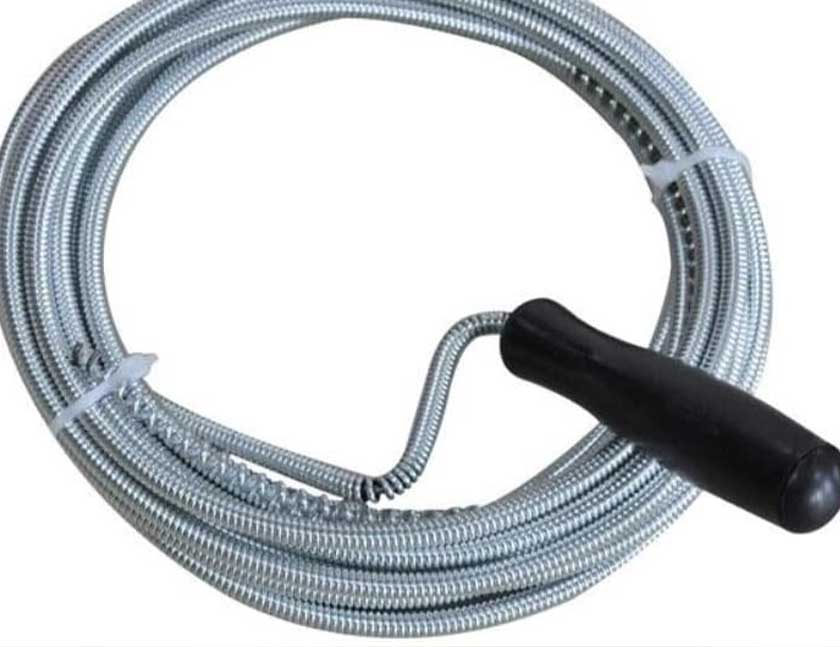
Source: Amazon
A drain snake, or plumber’s auger, is a flexible tool designed to navigate through pipes.
As the drain snake is inserted into the pipe and extended, it either hooks onto or breaks through the blockage.
By rotating and extending the snake, it can grab or break apart obstructions within the drain.
Advantages
- Suitable for various types of blockages, including hair, paper, and small objects.
- A drain snake can be used multiple times, providing a cost-effective solution to help clear a drain pipe.
- Effective for reaching blockages situated deep within the pipes.
Disadvantages
- Proper usage demands some skill to navigate the snake through the pipes.
- Incorrect use or excessive force can damage pipes.
Water Jetting
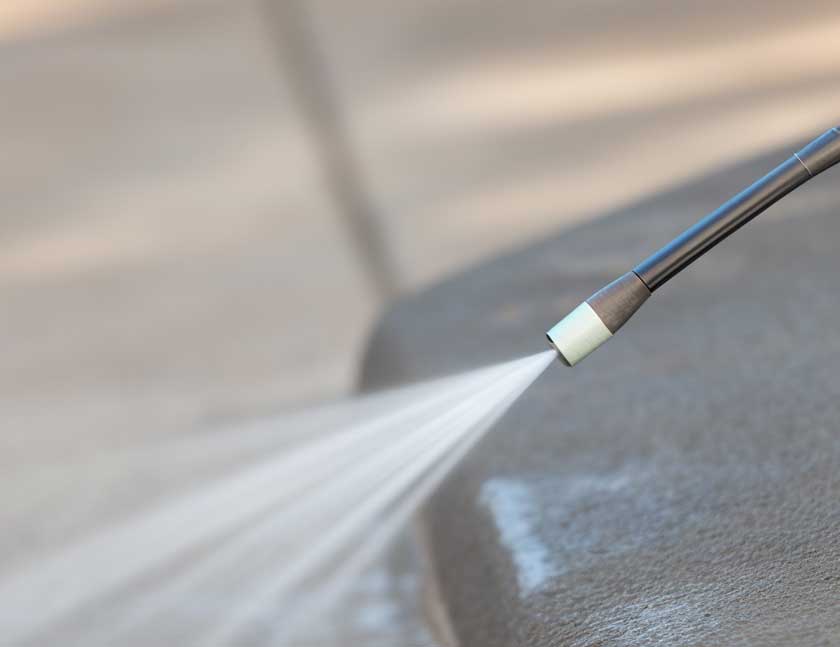
Water jetting employs high-pressure water streams to forcefully clear blockages.
The high-pressure water effectively dislodges and propels debris down the pipe, clearing the obstruction.
Water jetting is versatile and can be used for various types of blockages, making it a preferred choice for many professionals.
Advantages
- Powerful streams of water effectively clear various blockages..
- Suitable for both residential and commercial plumbing systems.
- Does not require chemicals or physical contact, minimising potential damage.
Disadvantages
- Requires specialised equipment typically used by plumbing professionals.
- High-pressure water may lead to splashing or damage by dislodged debris.
Hydro Jetting
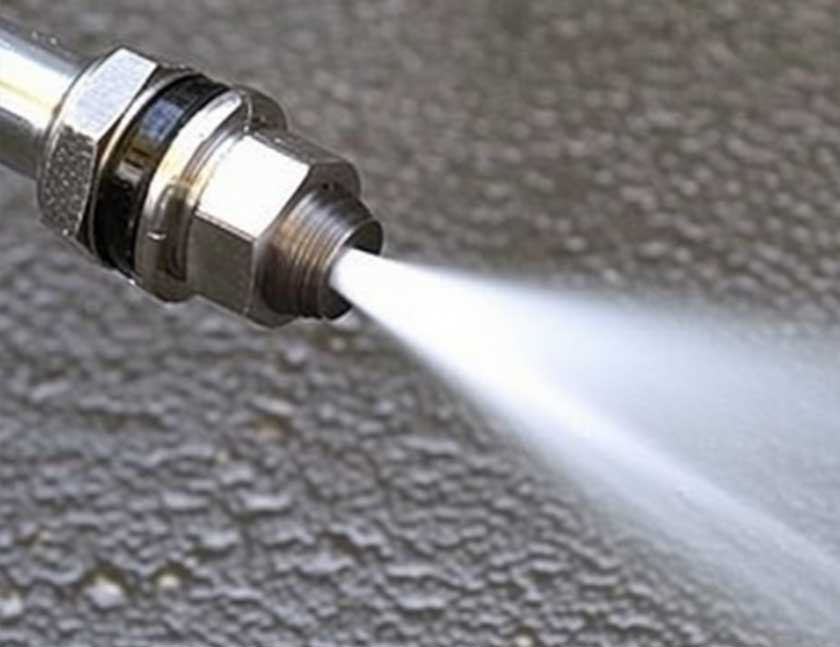
Similar to water jetting, hydro jetting uses highly pressurised water.
However, hydro jetting involves an even more forceful stream, capable of tackling severe blockages and thoroughly cleaning the entire pipe.
Hydro jetting is a comprehensive solution for maintenance and severe clogs.
Advantages
- Utilises high-pressure water jets to tackle even the toughest blockages.
- Clears pretty much all types of debris.
- Effective for routine maintenance, preventing future blockages.
Disadvantages
- Requires a trained technician with specialised equipment.
- Hydro jetting can be more expensive than other methods.
- In inexperienced hands, the high-pressure water can damage old or weakened pipes.
Milling Machine
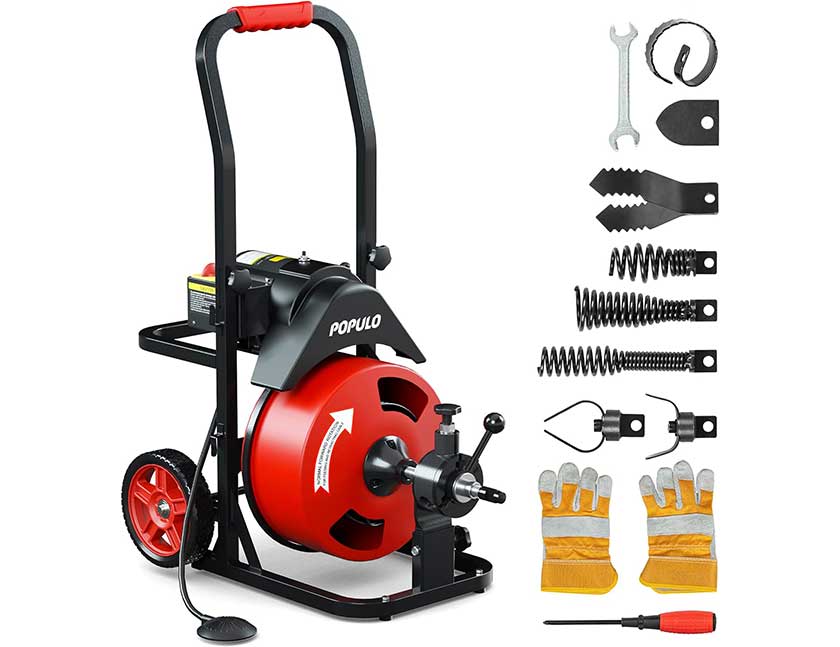
Source: Amazon
A milling machine, also known as a drain mill, grinds away debris within the pipe using blades or cutting elements.
The milling machine is inserted into the pipe and, with its cutting action, grinds and shreds solid debris, allowing it to be flushed out.
This method is effective for severe blockages and is typically used by plumbing professionals.
Advantages
- Ideal for severe or persistent blockages caused by solid materials.
- Milling machines can rapidly grind away tough debris, helping to clear the drain pipe quickly and efficiently.
Disadvantages
- Requires a skilled technician and specialised equipment.
- Heavy machinery poses a risk of damaging pipes if not used correctly.
- More expensive than some other methods due to the specialised equipment involved.
Use a Professional
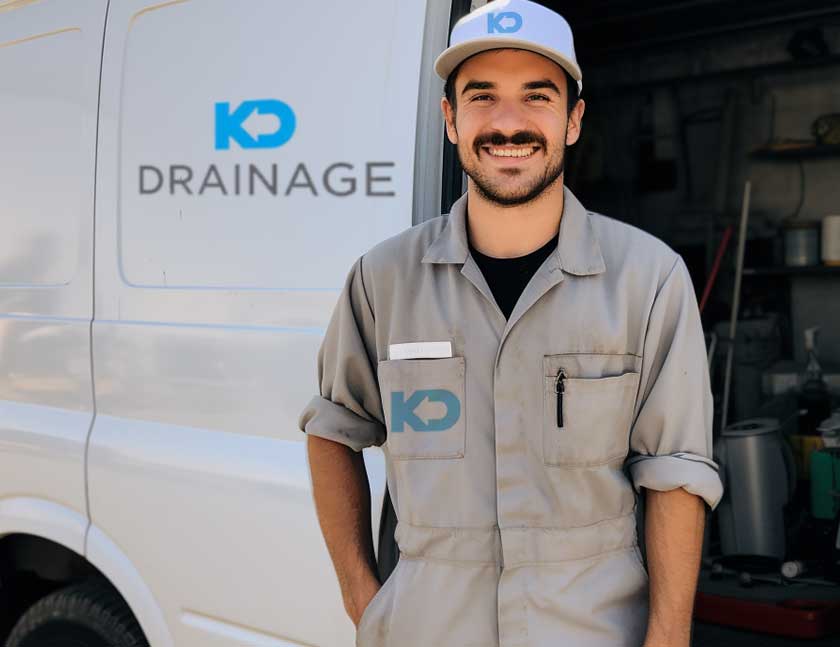
When enlisting professional help, a trained plumber assesses the blockage using tools like cameras to identify its location and severity.
They then choose the most suitable method for removal.
Their expertise ensures a comprehensive solution, addressing the root cause and preventing future issues.
Professional services, such as us here at KD Drainage, often come with a guarantee of successful resolution.
Advantages
- Plumbing professionals possess the knowledge and experience to handle various blockages.
- Professionals can diagnose the root cause and implement effective, lasting solutions.
- Minimises the risk of damaging pipes or causing further issues.
Disadvantages
- Professional services can be more expensive than DIY methods.
- Scheduling and waiting for a professional may take longer than immediate DIY interventions.
- Relies on external assistance rather than immediate action to clear the drain pipe.
How to Stop a Drain Pipe Getting Blocked
Regular Inspections
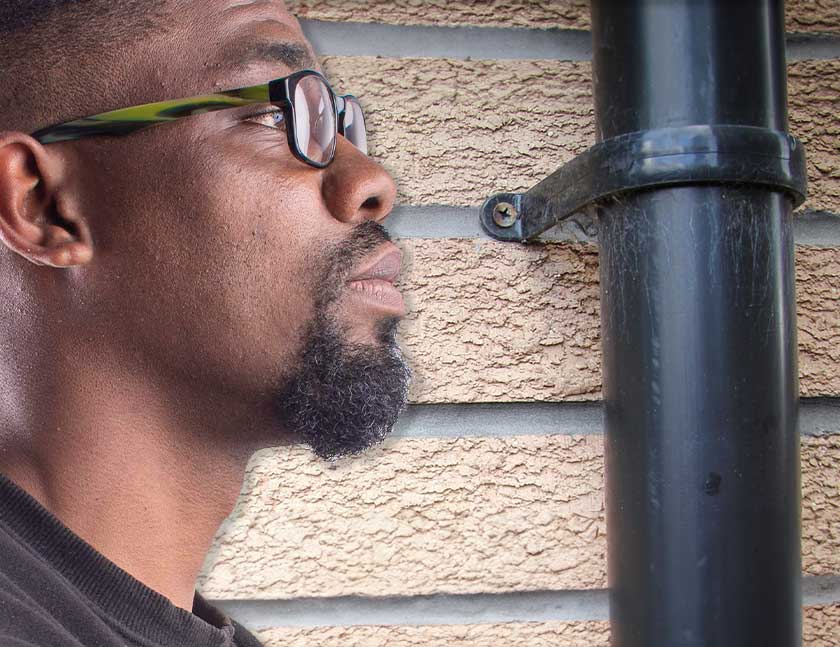
Regular inspections are the cornerstone of preventing drain pipe blockages.
Periodically check your drainage system for any signs of debris, damage, or potential issues.
This proactive approach allows you to identify and address minor concerns before they escalate into major blockages.
Regular Cleaning
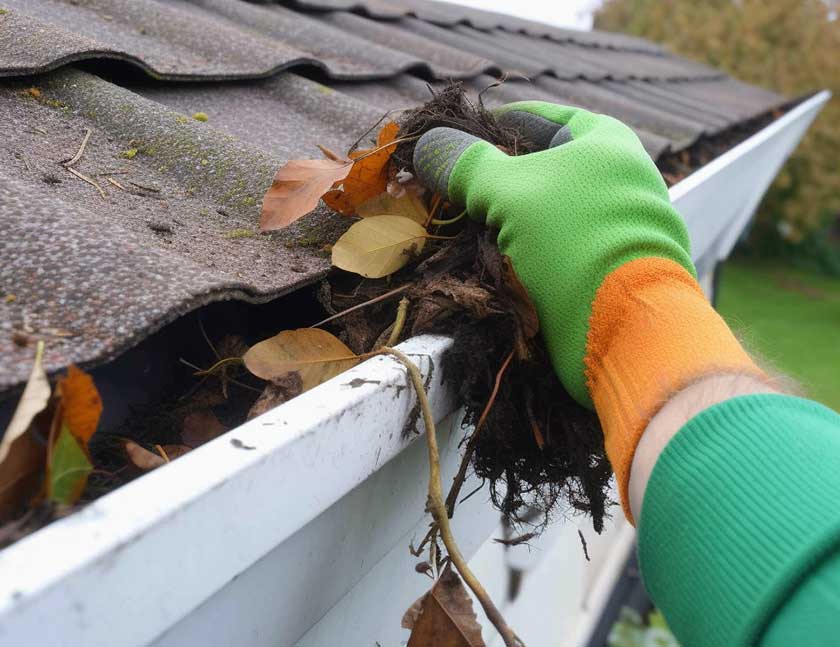
Implementing a routine cleaning schedule for your drain pipes is essential for maintaining optimal functionality.
Remove any visible debris, such as leaves, twigs, or dirt, from gutters and drain openings.
Consider using natural solutions like vinegar and baking soda for occasional flushing to prevent the buildup of grease and small blockages.
Replace Older Drain Pipes
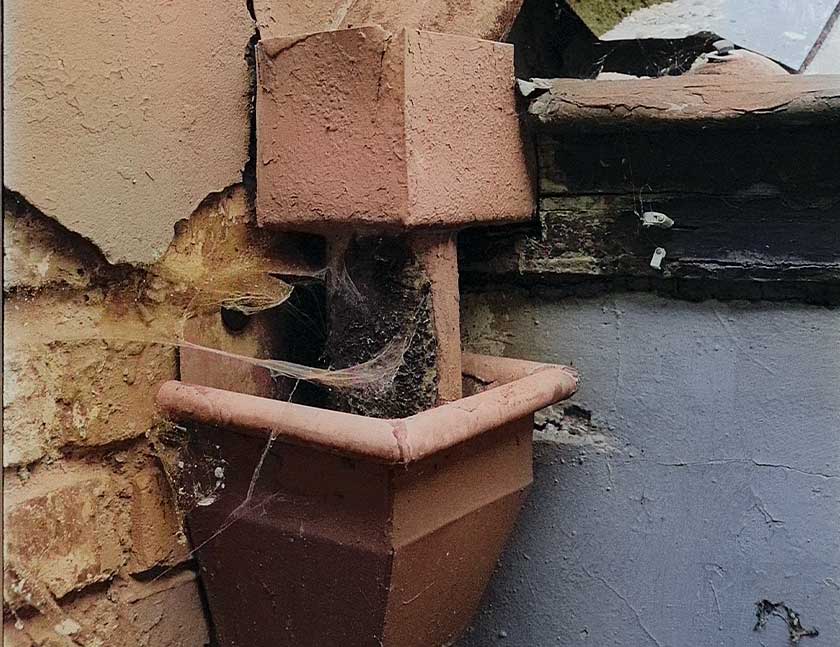
Older drain pipes are more susceptible to corrosion, rust, and blockages due to the accumulation of sediment over time.
Consider replacing ageing pipes with modern, durable materials that resist corrosion, ensuring a longer lifespan and reduced risk of blockages.
Replace Broken Roof Tiles Quickly
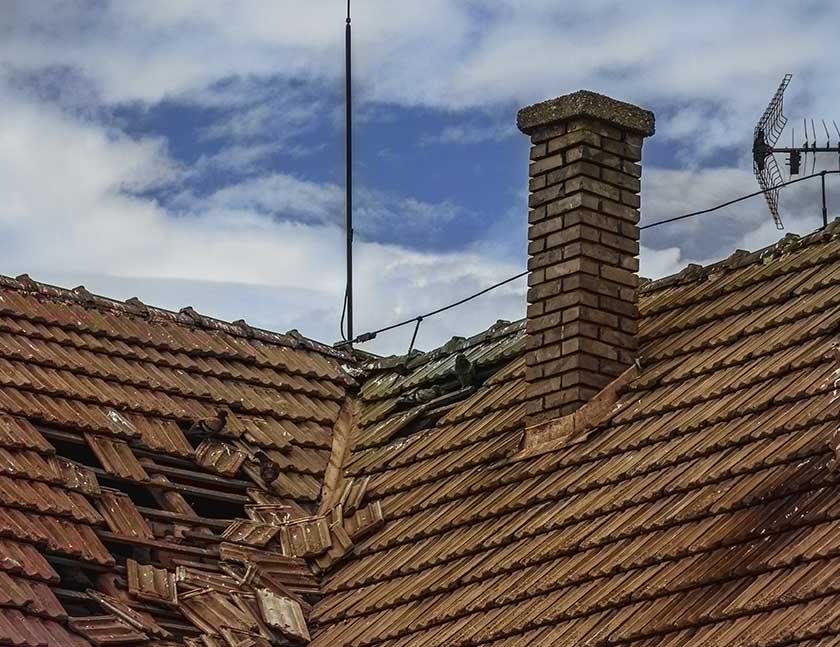
Damaged or broken roof tiles can be a gateway for debris to enter your drain pipes.
Address any issues with your roof promptly to prevent foreign materials from entering the drainage system.
Timely roof maintenance ensures that your drain pipes remain free from unnecessary obstructions.
Regular Professional Call Outs

Enlist the help of plumbing professionals for regular check-ups on your drainage system.
Professionals can conduct thorough inspections, identify potential problems, and provide preventive maintenance.
Regular professional call outs are an investment in the longevity and efficiency of your drain pipes, helping you stay ahead of any issues that could lead to blockages.
Conclusion
You should now know the best ways to clear a drain pipe.
A well-maintained drainage system is crucial for a smoothly functioning household.
By understanding the causes, recognising signs, employing effective clearing methods, and adopting preventive measures, you can ensure your drain pipes remain clear and efficient.
Remember, a little care goes a long way in avoiding drainage disasters.
If you require professional help with clearing a drain pipe, get in touch with us here at KD Drainage.

